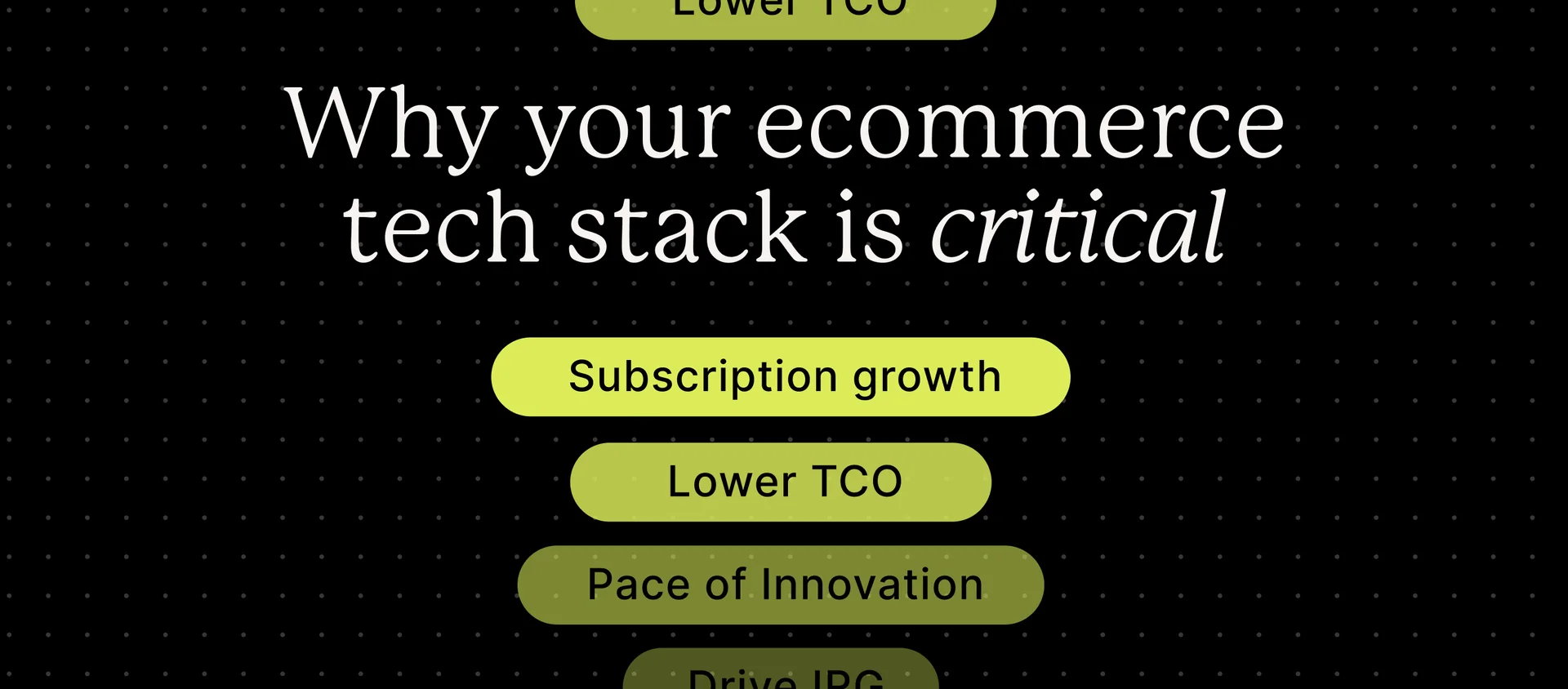So, you’ve attracted a core group of subscribers to your business. To build on that momentum, where should you turn your focus to next? Our answer: Get more value out of each of those existing customers by growing your subscription sales.
In this post, we’ll cover five key tactics subscription businesses can use to add value for recurring customers and increase sales. For more tips and tricks on how to grow and scale your subscription business, download our free ebook, Succeed with Subscriptions.
Key takeaways
- Subscription business models offer brands a valuable opportunity to increase recurring revenue.
- Cross-selling and upselling are key strategies for increasing sales for a subscription-based business.
- For greater impact, subscription services should personalize their offerings and make them as convenient as possible.
Five key tactics to grow your subscription sales
Increasing your subscription sales shouldn’t just mean adding value for your business—it should also mean adding value for both your new customers and existing ones. In both your subscription-oriented and traditional marketing efforts, be sure to provide customers with options for personalization, convenience, and other value-adds to ensure they have a positive experience with your brand.
1. Implement cross-selling and upselling
Cross-selling and upselling are two of the most important tools to have in your toolbox for increasing average order value (AOV) and customer lifetime value (LTV). Each of these sales tactics attempts to increase the value of a customer’s order through targeted product recommendations, with a few key differences.
Cross-selling
Let’s start with cross-selling. This strategy involves suggesting add-on products for your customers to supplement what’s already in their carts, increasing the value of that transaction.
To succeed with cross-selling, be sure to:
- Personalize your recommendations. According to Accenture, 91% of customers are more likely to shop with brands who recognize, remember, and provide relevant offers and recommendations. For example, you can offer product suggestions based on your customers’ purchase history with you, or on what is currently in their carts.
- Experiment with segmentation. Segmentation is breaking out your customer base into different groups with common traits. To take your personalization a step further, you can use segmentation to tailor your recommendations around factors like your customers’ geographic location or age group.
- Make adding on products as convenient as possible. Ensure your subscribers can add on a one-time product or service at multiple points in the shopping experience—in the customer portal, on the checkout page, and even through transactional SMS.

Upselling
Upselling, on the other hand, is offering your customers a more premium alternative to what is already in their carts for a higher price. Think of this strategy as offering your subscribers an upgrade that replaces their original purchase.
To succeed with upselling, follow these best practices:
- Make your upgrades reasonable. In other words, don’t suggest upgrades that are wildly different in quantity, size, or price than your customer’s original purchase—this lessens the chances that your recommendation will be relevant.
- Communicate any cost savings. While upsells increase the monetary value of an order, they also come with advantages for the customer, such as a more generous discount or free shipping. Make these benefits as clear as possible for customers to increase the likelihood that they take advantage of your offer.
- Limit choices strategically. When you offer too many upgrade options, you can overwhelm customers. This can jeopardize the effectiveness of your upselling efforts and even cause them to abandon the shopping process altogether. Focus on a few quality options with a proven track record of success.
2. Optimize your subscription catalog
To increase your subscription sales, you’ll want to make sure your customers can easily find the right products and purchase options in your subscription catalog. In other words, your products should be as intuitive to navigate as possible.
To optimize your subscription catalog:
- Offer multiple subscription products. From there, make sure that each product you offer on a recurring cadence is available with the proper subscription pricing strategy. For example, if you offer a few options of replenishable household essentials as one-time purchases, make sure that they’re also available for subscription purchase.
- Provide options to gift subscriptions. Do you sell subscription products or services that are conducive to gifting? Make sure that your customers can actually purchase these items as gifts. For example, you might consider offering pre-paid subscriptions for certain products, with options for a three-month, six-month, or year-long subscription.
- Curate product collections. Product collections are a great way to create a more engaging shopping experience and help customers find the products they’re looking for. Consider “frequently purchased together” collections, or assortments of similar, related products.
3. Give your subscribers flexibility
If your customers feel locked into subscriptions they can’t customize, you jeopardize not only your subscription sales but also your customer retention. By making your offerings as flexible as possible—throughout the entire subscription life cycle—you can encourage your customers to spend more with your business and increase trust in your brand. Regardless of the flexible options you offer, be sure to track customer usage over time so you can keep a pulse on the effectiveness of your efforts.
Key areas for subscription flexibility include:
- Product swaps: Mitigate the risk of subscription fatigue by making it easy for your subscribers to swap product variations (like flavors) so they can get the exact items they want in each delivery.
- Delivery cadences: Offer different choices for delivery cadences (like options for weekly, bi-weekly, and monthly deliveries) so customers can choose the best option for their schedules. Provide additional flexibility by letting customers edit their delivery cadence when possible.
- Options to skip or delay a shipment: Sometimes, your customers just need a break from their deliveries—whether that’s because of a budget issue, an excess of product, a vacation, or something else. Make it easy for them to skip or reschedule a delivery to create a positive experience with your brand that keeps them with your business.
- Subscription management: Make it easy for your subscribers to edit their orders with you on their own through the customer portal and strategies like transactional SMS.
4. Provide benefits after a minimum spend
Another easy way to incentivize your subscribers to spend more per transaction is to offer benefits once a minimum order amount is met. Be sure to communicate these benefits as clearly as possible to entice customers to hit the minimum dollar amount.
Some potential benefits could include:
- Free or discounted shipping
- Discounts for a fixed percentage or dollar amount
- Gift cards that can be used toward a future purchase
- Free trials or complimentary upgrades for a more premium subscription plan
5. Create product bundles
Product bundles are an easy way to add more value for both your subscribers and your business. By strategically packaging together an assortment of items, often at a discount to the customer, you can incentivize subscribers to spend more in a single transaction while increasing customer satisfaction and brand loyalty.
Types of bundles can include:
- Bestsellers: Package together an assortment of your bestselling products at a discounted rate to encourage customers to try more items with a proven success record that they may want to purchase again.
- Variety pack: Help your subscribers find their perfect product match by letting them try multiple versions or flavors of the same type of product in a single delivery. This strategy is particularly popular for certain subscription models, such as the replenishment model, as well as specific verticals, like the Food & Beverage category.
- Two or more bestsellers + one less popular product: Bundle together two or more of your bestselling products with one less popular product at a discounted rate to encourage your customers to purchase lower-performing inventory.
- Two or more bestsellers + one new product: Bundle together two or more of your bestselling products with one new product at a discounted rate—they’re more likely to commit to a subscription if they’ve already tried the product.
Get more out of the subscription business model
Increasing sales for your subscription store over time is an important strategy for scaling your business. Of course, there are other important steps to take to get the most out of the subscription model for your business—regardless of your ecommerce platform.
For more in-depth information on growing your sales in today’s subscription economy, as well as step-by-step instructions on how to acquire more subscribers, improve the customer experience, and tackle churn, download our free ebook, Succeed with Subscriptions.



